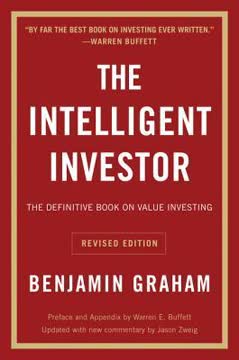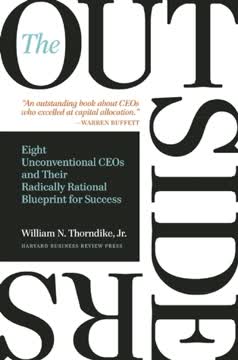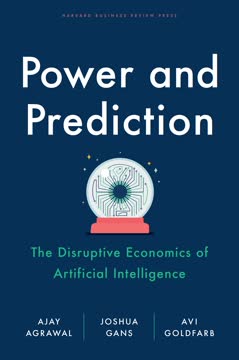Key Takeaways
1. Value investing focuses on buying undervalued securities
"Value investing in the manner initially defined by Benjamin Graham and David Dodd rests on three key characteristics of financial markets."
Fundamental principles. Value investing is based on the idea that market prices don't always reflect a security's true worth. This approach seeks to:
- Identify securities trading below their intrinsic value
- Capitalize on market irrationality and price fluctuations
- Provide a margin of safety to protect against potential losses
Value investors analyze financial statements, industry dynamics, and competitive positioning to determine a company's true value. They then wait patiently for opportunities to buy when the market price falls significantly below this intrinsic value.
2. Margins of safety protect against market volatility
"We believe this margin-of-safety principle, so strongly emphasized by Ben Graham, to be the cornerstone of investment success."
Risk mitigation strategy. The margin of safety is a fundamental concept in value investing that provides:
- Protection against estimation errors in valuation
- A buffer against market volatility and unforeseen events
- Potential for higher returns as the market eventually recognizes true value
Value investors typically seek a margin of safety of 30-50% below their estimated intrinsic value. This approach helps limit downside risk while positioning for significant upside potential when market prices eventually align with fundamental value.
3. Intrinsic value is determined by asset value, earnings power, and growth
"The value of any stock, bond or business today is determined by the cash inflows and outflows-discounted at an appropriate interest rate-that can be expected to occur during the remaining life of the asset."
Valuation framework. Value investors assess intrinsic value using a three-pronged approach:
- Asset value: Reproduction cost of tangible and intangible assets
- Earnings power: Sustainable level of normalized earnings
- Growth: Potential for profitable expansion within a company's competitive advantages
This framework provides a more comprehensive and reliable valuation than simplistic price-to-earnings ratios or discounted cash flow models alone. It forces investors to consider both current assets and future earnings potential while remaining grounded in economic reality.
4. Economic moats and competitive advantages create lasting value
"The existence of all three conditions will be demonstrated by a company's ability to regularly price its product or service aggressively and thereby to earn high rates of return on capital."
Sustainable profitability. Economic moats protect a company's competitive position and enable sustained above-average returns. Key sources of moats include:
- Network effects
- High switching costs
- Intangible assets (brands, patents)
- Cost advantages
- Efficient scale
Value investors seek companies with durable competitive advantages that can maintain high profitability over long periods. These moats allow companies to grow within their circle of competence while fending off competitive threats.
5. Diversification should be balanced with conviction
"We believe that a policy of portfolio concentration may well decrease risk if it raises, as it should, both the intensity with which an investor thinks about a business and the comfort-level he must feel with its economic characteristics before buying into it."
Focused approach. While diversification is important for risk management, excessive diversification can dilute returns and lead to "diworsification." Value investors often:
- Hold concentrated portfolios of 10-30 stocks
- Develop deep knowledge of their holdings
- Size positions based on conviction and margin of safety
This approach allows investors to benefit from their best ideas while still maintaining some level of diversification. It requires thorough research and the discipline to avoid overconfidence.
6. Patience and discipline are crucial for long-term success
"Time is the friend of the wonderful business, the enemy of the mediocre."
Long-term orientation. Value investing requires the ability to:
- Wait for attractive opportunities to emerge
- Hold positions through market volatility
- Allow time for intrinsic value to be realized
Successful value investors cultivate patience and emotional discipline. They avoid the temptation to chase short-term performance or react to market noise. Instead, they focus on the long-term fundamentals of their holdings and the gradual compounding of value over time.
7. Motivated sellers and absent buyers create opportunities
"When assets are sold for noneconomic reasons, the most common explanation is that some type of institutional constraint obligated the owner to move."
Market inefficiencies. Value investors look for situations where:
- Forced selling creates temporary mispricings
- Lack of buyer interest leads to undervaluation
- Complex or obscure situations deter other investors
Examples include:
- Spin-offs
- Post-bankruptcy securities
- Illiquid small-cap stocks
By focusing on these neglected areas of the market, value investors can find opportunities overlooked by others and potentially earn superior returns.
8. Catalysts can unlock hidden value in companies
"Environmental catalysts are disruptive shifts in the world in which businesses operate."
Value realization. While patient value investors are willing to wait for the market to recognize intrinsic value, catalysts can accelerate this process:
- Corporate actions (spin-offs, asset sales, buybacks)
- Activist investors pushing for change
- Industry consolidation
- Regulatory changes
Value investors seek to identify potential catalysts that could unlock value in their holdings. This approach combines the margin of safety of value investing with a more proactive stance toward value realization.
9. Thorough research and analysis are essential for value investors
"An investor needs to do very few things right as long as he or she avoids big mistakes."
Intellectual rigor. Successful value investing requires:
- Deep understanding of business models and industry dynamics
- Analysis of financial statements and accounting practices
- Assessment of management quality and capital allocation
- Continuous learning and refinement of investment process
Value investors develop expertise in specific areas and industries, allowing them to spot opportunities and avoid pitfalls. They prioritize original research over reliance on Wall Street analysts or management guidance.
10. Simplicity and low costs can lead to superior returns
"Keep It Simple, and Cheap"
Efficient approach. Some of the most successful value investors have employed remarkably straightforward strategies:
- Focus on easily understandable businesses
- Minimize trading and transaction costs
- Avoid complex financial engineering or derivatives
- Maintain a low-cost operating structure
This approach allows investors to concentrate on fundamental analysis and long-term value creation rather than getting caught up in short-term market movements or complex strategies. It also aligns with the value investing principle of preserving capital and minimizing unnecessary risks.
Last updated:
FAQ
What's Value Investing: From Graham to Buffett and Beyond about?
- Focus on Value Investing: The book provides a comprehensive overview of value investing, tracing its origins from Benjamin Graham to modern practitioners like Warren Buffett.
- Investment Principles: It emphasizes buying securities at a price significantly below their intrinsic value and outlines key principles such as the "margin of safety."
- Practical Applications: The authors discuss valuation techniques, portfolio construction, and profiles of successful value investors, making it a valuable resource for investors.
Why should I read Value Investing: From Graham to Buffett and Beyond?
- Historical Context: The book offers historical context and evolution of value investing, helping readers understand its adaptation over time.
- Expert Insights: It features insights from renowned value investors, providing a chance to learn from their experiences and strategies.
- Comprehensive Guide: Serving as a comprehensive guide, it is suitable for anyone looking to improve their investment acumen.
What are the key takeaways of Value Investing: From Graham to Buffett and Beyond?
- Intrinsic Value Importance: Understanding intrinsic value is crucial for successful investing, emphasizing buying stocks below their calculated intrinsic value.
- Margin of Safety: This concept is central, advocating for investments that provide a buffer against errors in judgment or market fluctuations.
- Long-Term Perspective: The book encourages a long-term investment horizon, focusing on the underlying value of companies rather than short-term market fluctuations.
What is the "margin of safety" in value investing according to Value Investing?
- Definition: The margin of safety is the difference between a stock's intrinsic value and its market price, acting as a buffer against potential errors.
- Ideal Range: Benjamin Graham suggested aiming for a margin of safety of at least 30% to 50% when purchasing stocks.
- Risk Mitigation: This concept helps mitigate risk, ensuring protection even if the market price declines.
How do I determine the intrinsic value of a stock according to Value Investing?
- Valuation Techniques: The book outlines techniques like discounted cash flow analysis and asset-based valuations for estimating intrinsic value.
- Focus on Earnings Power: It emphasizes assessing a company's earnings power by analyzing current earnings and adjusting for factors like depreciation.
- Asset Valuation: Start with tangible asset value, then consider earnings power and potential growth for a comprehensive intrinsic value estimate.
What are the three sources of value in investing as discussed in Value Investing?
- Asset Value: This refers to the current value of a company's tangible and intangible assets, assessed through balance sheet analysis.
- Earnings Power Value (EPV): Calculated based on a company's current earnings, adjusted for sustainability and capital costs.
- Growth Value: Considers the potential for future growth within a company's franchise, emphasizing sustainable and profitable growth.
What is the significance of behavioral finance in Value Investing?
- Investor Psychology: The book highlights how psychological biases can lead to irrational decisions, affecting stock valuations.
- Market Inefficiencies: These biases contribute to market inefficiencies, creating opportunities for disciplined value investors.
- Long-Term Perspective: Understanding behavioral finance helps investors avoid short-term pitfalls and maintain a long-term perspective.
How do successful value investors construct their portfolios according to Value Investing?
- Concentration vs. Diversification: The book discusses balancing concentration in well-researched investments with diversification to mitigate risk.
- Margin of Safety: Portfolio construction is guided by the principle of margin of safety, ensuring significant buffers against potential losses.
- Continuous Evaluation: Successful investors regularly evaluate holdings, adjusting portfolios based on changes in intrinsic value and market conditions.
How does Value Investing address the efficient market hypothesis?
- Critique of Market Efficiency: The book discusses the efficient market hypothesis, arguing that markets are not always efficient, allowing for mispriced securities.
- Bottom-Up Analysis: Emphasizes a bottom-up approach, focusing on individual company fundamentals rather than macroeconomic trends.
- Opportunities in Inefficiency: Suggests that market inefficiencies create opportunities for value investors to uncover hidden value.
What strategies do value investors use to find undervalued stocks according to Value Investing?
- Screening for Value: Investors use screening tools to identify stocks trading below intrinsic value, using metrics like price-to-earnings ratios.
- Focus on Financial Statements: Analyzing financial statements is crucial for assessing a company's health, looking for strong balance sheets and cash flow.
- Catalysts for Change: Identifying potential catalysts, such as management changes or restructuring, that could unlock value.
How does Value Investing suggest handling cash in a value investing strategy?
- Cash as a Default Strategy: Holding cash is prudent when the market is overvalued or lacks attractive opportunities, allowing for better conditions.
- Opportunity Cost Consideration: While holding cash may seem unproductive, it provides flexibility to act quickly when opportunities arise.
- Balancing Cash and Investments: Maintaining a balance between cash reserves and investments helps manage risk and capitalize on market conditions.
What are the best quotes from Value Investing: From Graham to Buffett and Beyond and what do they mean?
- "Investing is allocating capital.": Emphasizes the fundamental nature of investing as making informed decisions about resource allocation for returns.
- "The market is a voting machine in the short run, but a weighing machine in the long run.": Highlights that while market prices fluctuate based on sentiment, true value is recognized over time.
- "If the market is overvalued, it is a good time to hold cash.": Reflects a disciplined approach, prioritizing quality over quantity when opportunities are scarce.
Review Summary
Value Investing: From Graham to Buffett and Beyond is praised as a comprehensive guide to value investing principles and techniques. Readers appreciate its in-depth coverage of valuation methods, practical examples, and profiles of successful investors. The book is considered particularly useful for those with some financial background. While some find certain sections less engaging, many readers highlight its valuable insights into assessing company value, understanding competitive advantages, and applying value investing strategies. The book is generally well-regarded as an essential resource for value investors.
Similar Books










Download PDF
Download EPUB
.epub digital book format is ideal for reading ebooks on phones, tablets, and e-readers.





